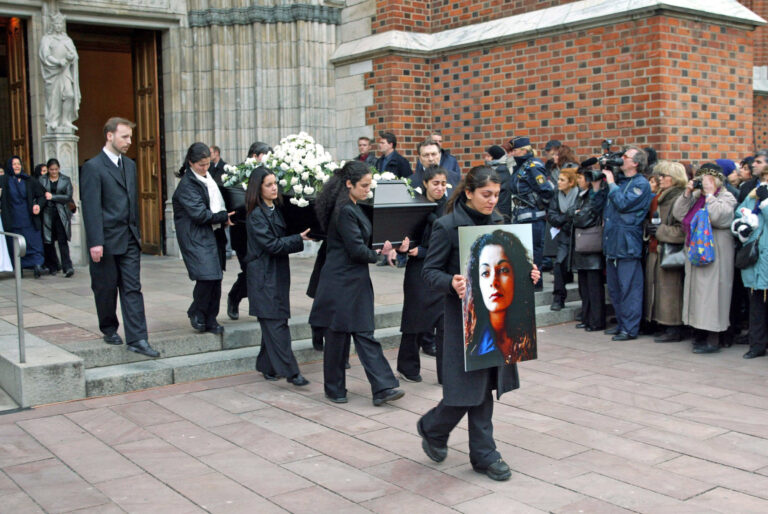Threats After the Great Carefree Era
It was here that NATO expected the Warsaw Pact’s armoured divisions would try to break through with the goal of reaching first Frankfurt and then the Rhine. It was here that one of the great battles would take place.
Mighty armoured columns, army units with tens of thousands of soldiers, heavy artillery. This is how ‘The Great Threat’ looked, and this notion has been incredibly difficult for many to free themselves from. It has continued to define the notion of conflict even after the Wall fell, the Soviet Union was dissolved, and the map of Europe was redrawn. No other idea about security threats and military risks has managed to take such a place in the public consciousness, and this while the image of The Great Threat has faded like an old Polaroid and ceased to be perceived as relevant for our time.
The latter may not have been unreasonable in itself, but it has had a disproportionate impact: when The Great Threat faded, nothing took its place but The Great Carefree Era. People who warned about the dream of eternal peace were dismissed as cold warriors, and policymakers listened to their warnings with the same indulgent smile as when you look at the hairstyles on a vacation photo from a past decade. Safeguarding the national defence has been regarded as hopeless 1980s nostalgia, fully comparable with safeguarding poodle haircut.
The result for Sweden was first a ”strategic timeout”, whose original meaning was simply a ”time out”, i.e., a period of costly and destructive irrelevance – the strategic element of which remains a mystery. Then the international commitment came into focus, where the duty system was dismantled without any durable replacement being in place and we then got a sticking-plaster structure that was completely unaffected by actual national needs. The alarm clock of Georgia in 2008 did get some of those with some responsibility to go from a sleeping to half-asleep state, but there has not been ??any major impact beyond the rhetoric.
And now Russia has conquered a piece of a neighbouring country.
It has revived some and they have made themselves heard, but many reactions feel both misguided and opportunistic; they seem much more closely about the desire to appear as energetic than a real awakening concerning about the national defence and Sweden’s security. Statements about new resources have been vague and somewhat committal, and that applies even more so to ideas about what they will be used for. Social Democrats and Moderates still seem more interested in apportioning blame than achieving practical solutions.
A major risk is that The Great Threat still has power over thought, what’s happened in the Crimea notwithstanding. One cannot bring oneself to believe that Russian landing craft will run up on Swedish beaches and let the armour roll in and, when one does not believe in The Great Threat, one is not able to believe in any other risks either. The debate over a military presence on the island of Gotland clearly demonstrates this.
In my last leader, I raised Johan Wiktorin’s thoughtful scenario in The Corridor to Kaliningrad, where he is not interested in a hypothetical major war to come, but the threat that exists here and now. “This is not necessarily a probable scenario,” I wrote, “but our credibility is at stake. Something like this could happen, not sometime in the distant future, but tomorrow.” Yes, and now it has happened, though not in Lithuania, but in Ukraine. Wiktorin’s imagined scenario became reality, though under a different name: The Corridor to the Crimea.
Russia has armour and can deploy with tens of thousands of men, the risk exists that it can invade the Ukraine, but the conquest of the Crimea was done in a quite different way: the new threat was found to consist of a combination of propaganda, plain uniforms, fast helicopter transport and a lightning fast presentation to the world with a fait accompli. It gave no warning; it did not wait for unhappy reactions. It struck quickly, efficiently and on many types of front simultaneously.
Populärt
Hederskulturens medlöpare
Första skottet gick in i pannan, det andra i käken. Hon slapp höra hur fadern upprepade ordet ”hora” när han sköt. Obduktionen visade att den första kulan avslutade Fadime Sahindals 26-åriga liv.
And you know what? It can happen again. Not in precisely the same way. But according to a similar pattern. Rest assured that our neighbours in Estonia and Latvia are aware of this.
Therefore, we need to take the ideas of an operational defence seriously, which means: we cannot wait until 2023 for the organisation that should be ready this year. We have to train. We must do whatever it takes so the Armed Forces will be able to recruit. We should not skimp. We need to have a security policy worthy of the name. We, ultimately, have to take the issue of defence seriously.
VD och chefredaktör i Axess.





